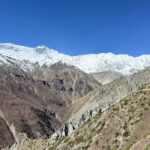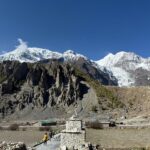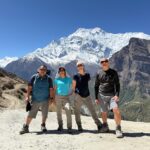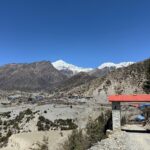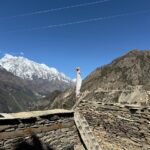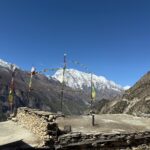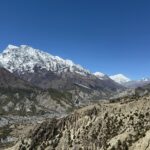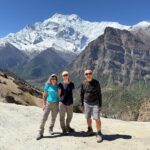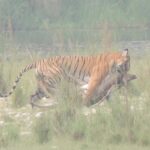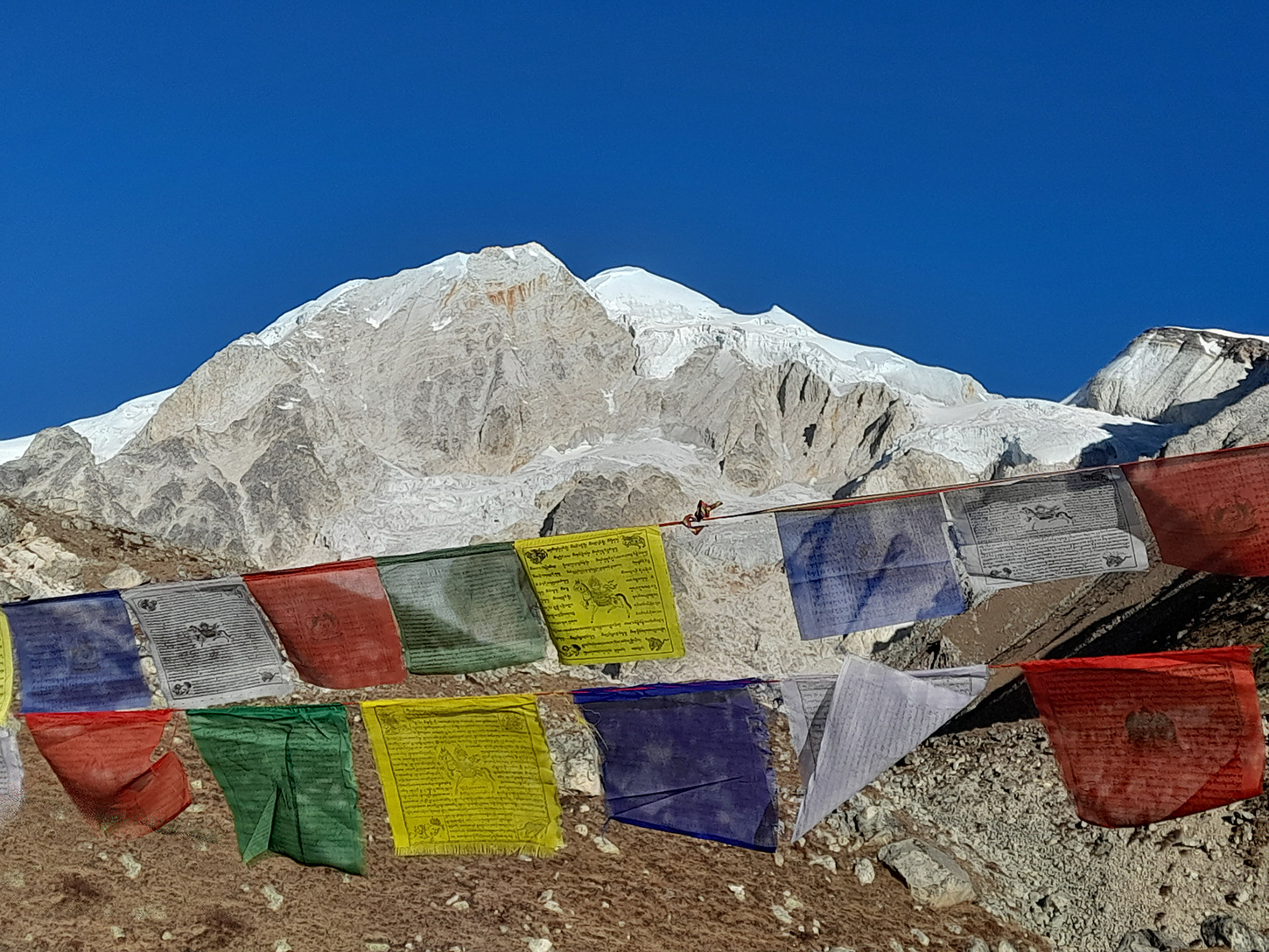
The Manaslu Circuit Trek and Its 22 Remarkable Highlights
The Manaslu Circuit Trek is an iconic adventure that offers a harmonious blend of natural beauty, cultural immersion, and thrilling challenges, making it one of Nepal’s most rewarding trekking experiences. At 8,163 meters, the eighth-highest mountain in the world, Mount Manaslu’s shadow guides you across a varied terrain comprising alpine meadows, subtropical woods, rushing rivers, and glacial regions. Rich in biodiversity, the trail winds throughout the Manaslu Conservation Area, home to rare species and flora and fauna, and provides amazing vistas of deep valleys and snow-covered mountains.
Apart from the breathtaking surroundings, the journey offers a cultural encounter whereby you can visit traditional villages where Gurung, Tamang, and Tibetan-influenced populations live. Trekkers will come across chortens, historic monasteries, and vibrant prayer flags to help them to connect with the spiritual core of the region. Reaching an elevation of 5,160 meters, the climb to the Larkya La Pass epitribes the adventurous character of the path, rewarding those who travel with expansive views of the grand Himalayan peaks.
This guide highlights 22 exceptional characteristics of the Manaslu Circuit Trek that make it a must trip, therefore stressing its special attraction and remarkable experiences for every traveler.
1. Be Prepared to Discover Diverse Flora and Fauna
The Manaslu region, located within the Manaslu Conservation Area, is renowned for its remarkable biodiversity. This natural haven is home to 33 species of mammals, 110 bird species, and three types of reptiles. Moreover, over 2,000 plant species flourish here, creating a paradise for nature enthusiasts. Trekkers can enjoy the vibrant rhododendron and pine forests, particularly stunning in spring, and may even catch a glimpse of rare wildlife, making each step of the trek a captivating experience with Nepal’s diverse ecosystems.
2. Explore the Historic Town of Arughat
The trek kicks off with a drive to Arughat, a historic town in the Gorkha district situated alongside the Budhi Gandaki River. This lively hub provides insights into Nepalese rural life and bustling markets, showcasing the rich cultures of Gurungs, Tamangs, and Sherpas. Stroll through its picturesque streets, engage with locals, and observe daily life that is deeply intertwined with agriculture and tradition. A visit to Arughat serves as a meaningful introduction to the adventure that lies ahead on the Manaslu Circuit Trek.
3. Journey to Soti Khola
The adventure continues with a scenic drive or trek to Soti Khola, following the path of the Budhi Gandaki River. Along the way, you’ll pass terraced fields, charming villages, and lush landscapes. Soti Khola is a tranquil village that offers basic amenities, making it a perfect resting spot. Mainly inhabited by Gurung and Magar communities, this stop provides trekkers with a taste of local hospitality amidst the serene natural surroundings.
4. Navigate the Machha Khola
Crossing the Machha Khola (Fish River) is an exhilarating highlight of the trek. Trekkers walk across a suspension bridge, enjoying breathtaking views of the river and the calming sounds of rushing water. Beyond its natural beauty, the river is vital for the region, supporting an 18.5 MW hydropower project. This crossing combines stunning scenery with a sense of adventure.
5. Explore Jagat Village
Jagat is a UNESCO World Heritage Site characterized by its stone-paved streets, traditional homes, and vibrant Buddhist influences. Situated near Machha Khola, it boasts a rich cultural and architectural heritage. You can visit monasteries, chortens, and prayer flags while engaging with the friendly Gurung and Magar locals. This village truly captures the essence of the Manaslu region, offering a delightful mix of tradition and natural beauty.
6. Get Familiar with Ghap Village
Ghap Village, perched at 2,080 meters, merges cultural richness with stunning landscapes. Located alongside the Budhi Gandaki River, it showcases traditional stone houses and intricate woodwork that reflect Gurung heritage. Take the time to interact with locals to discover their customs and cuisine while soaking in the village’s pristine surroundings. As part of the Manaslu Conservation Area, Ghap is home to diverse flora and fauna, including rare species like snow leopards and red pandas.
7. Enjoy the Bamboo Forests Near Deng
As you make your way to Deng Village, you’ll wander through enchanting bamboo forests. These lush woodlands create a peaceful atmosphere and offer a refreshing change of scenery. This area is perfect for photography, allowing trekkers to capture the unique play of light, shadow, and greenery while enjoying the beauty of nature.
8. Experience Namrung
Namrung Village provides breathtaking views of the Siring and Ganesh Himal mountains and is steeped in Tibetan-influenced culture. With its ancient monasteries, terraced fields, and vibrant rhododendron forests, this stop is a sensory delight. Wildlife enthusiasts may even spot Himalayan marmots or langurs in the area. Namrung is a cultural and natural gem on the trek, offering both adventure and tranquility.
9. Explore Lho Village
Lho Village, located in the Nubri Valley, is famous for its stunning views of Mount Manaslu. The Ribung Gompa monastery, an important cultural landmark, welcomes visitors to meditate and immerse themselves in local Buddhist practices. Festivals such as Saga Dawa and Dumje enhance the village’s cultural vibrancy. With its traditional homes, welcoming residents, and opportunities for wildlife spotting, Lho is a highlight on the Manaslu Circuit Trek.
10. Explore Lho Village
Lho Village is situated in the remote Nubri Valley of the Gorkha District, famous for its stunning views of Mount Manaslu and its rich cultural heritage. This village, located about 20 kilometers from Gorkha Bazaar, the district’s administrative center, is surrounded by rugged landscapes and narrow valleys. One of the main attractions in Lho is its many Buddhist monuments, including monasteries and chortens, which showcase the strong influence of Tibetan Buddhism. The Ribung Gompa (monastery) stands out, providing a peaceful environment for meditation and a deeper understanding of Buddhist teachings and practices.
The local community hosts various festivals, such as the Tibetan New Year (Losar), Saga Dawa, and Dumje, allowing visitors to immerse themselves in the vibrant cultural scene. The village has a rustic charm, characterized by traditional stone houses and friendly, welcoming residents. Adventurers traveling through Lho might also spot rare wildlife like red pandas and snow leopards in the nearby forests, enhancing the area’s appeal.
11. Enjoy the Views from Shyala Village
Shyala Village is a charming stop on the Manaslu Circuit, where trekkers can take a break, acclimatize, and enjoy breathtaking views of the Himalayas. The accommodations here include cozy tea houses and guesthouses, offering simple yet comfortable options like private rooms or shared dormitories.
What sets Shyala apart is its stunning panoramic views of some of the region’s most famous peaks, such as Manaslu, Himalchuli, and Ganesh Himal. In addition to its natural beauty, the village is a cultural melting pot, home to Gurungs, Tamangs, and Sherpas. Visitors can dive into traditional customs, festivals, and practices, and explore spiritual sites like the Pungyen Gompa. This monastery serves not only as a place of worship but also as a peaceful spot for reflection, making it a must-see for those looking to connect more deeply with the local culture.
12. Visit Sama Gaon
Sama Gaon is one of the largest and most culturally rich villages along the trek. Serving as the base for expeditions to the Manaslu Base Camp, it is inhabited by the ethnic Nubri community, whose traditions and lifestyle showcase the Tibetan influence in the area. Sama Gaon is a favored stop for trekkers to acclimatize, offering plenty of opportunities for exploration during their visit.
The village features ancient monasteries, including the famous Pungyen Gompa, a significant spiritual and historical site. Trekkers can take in sweeping views of Mount Manaslu while experiencing the local way of life. Whether wandering through the village or gearing up for the next part of the journey, Sama Gaon presents a delightful mix of cultural depth and natural beauty.
13. Trek to Manaslu Base Camp
A trek to Manaslu Base Camp from Sama Gaon is both challenging and rewarding for adventure enthusiasts. This journey provides stunning views of the Manaslu Glacier and the surrounding snow-capped peaks, making it a must-see for photographers and nature lovers alike.
The hike takes about five hours one way, featuring steep ascents that really test your physical endurance. Despite the challenges, the sense of achievement and the breathtaking scenery make it all worthwhile. Along the route, trekkers navigate rugged terrain and glacial moraines, offering a firsthand glimpse of the raw beauty of the Himalayan landscape.
14. Visit Birendra Lake
Birendra Lake is a beautiful glacial lake located in the Manaslu Conservation Area, close to the Punhyen Glacier. Named after the late King Birendra of Nepal, this tranquil lake is about 1.88 miles from Sama Gaon. The moderately challenging trail to the lake rewards trekkers with stunning views of towering snow-covered peaks, lush forests, and flowing streams.
When you arrive at the lake, you’ll be welcomed by its crystal-clear waters, which reflect the surrounding mountains in a captivating display. Whether you take a short break or linger to soak in the peaceful atmosphere, Birendra Lake offers a refreshing and unforgettable experience in the midst of nature’s splendor.
15. Explore Samdo Village while Acclimatizing
Samdo Village, located near the Larkya La Pass, serves as a gateway to the next leg of the trek. This village, primarily inhabited by the Bhotias, reflects a lifestyle deeply influenced by Tibetan culture. The local community practices Tibetan Buddhism, which is evident in the monastery and various cultural traditions.
Visitors have the opportunity to engage with the friendly locals, gaining insights into their customs, daily lives, and culinary practices. The panoramic views of the Himalayas from Samdo are simply breathtaking, making it a perfect spot for acclimatization as you prepare for the high-altitude crossing ahead.
16. Enjoy the Rustic Dharamsala
Dharamsala, often referred to as Larkya Phedi, is the last stop before tackling the challenging Larkya La Pass. Situated at an elevation of about 4,460 meters (14,632 feet), this small settlement offers basic accommodations and meals for trekkers, providing a much-needed respite.
The region is famous for its stunning landscapes, where rugged peaks and wide-open views create a striking yet beautiful environment. Spending a night here not only aids in acclimatization but also helps trekkers regain their strength for the tough climb ahead. Dharamsala is a crucial waypoint, blending practicality with the breathtaking beauty of its surroundings.
17. Cross the Larkya La Pass
Reaching the Larkya La Pass (5,160 meters) is a highlight of the Manaslu Circuit Trek, presenting breathtaking views of famous peaks like Cheo Himal, Himlung Himal, Annapurna II, and Kang Guru. This part of the trek is both demanding and thrilling, necessitating an early start to dodge the fierce winds that usually pick up in the afternoon.
The trek involves a gradual ascent and a trek past four frozen lakes before finally reaching the pass. Trekkers are rewarded with expansive views and a deep sense of achievement after navigating this high-altitude path.
18. Descend to Bhimtang
Bhimtang, a charming village set in a lush valley, is the first significant stop after crossing the Larkya La Pass. This peaceful spot offers a well-earned break for tired trekkers. Surrounded by green meadows and thick forests, Bhimtang provides stunning views of the Manaslu range, making it a perfect place to rest and reflect on the adventure.
19. Enjoy the Remote Gho Village
Gho Village is a charming and tranquil settlement that offers a glimpse into the traditional rural lifestyle of the area. With its simple homes and peaceful surroundings, Gho allows visitors to engage with locals and witness their everyday lives.
20. Explore Tilije Village
Tilije Village, located in the Manang District, is celebrated for its stunning scenery and warm hospitality. Mainly inhabited by the Gurung community, the village showcases the cultural richness of the region. Visitors can savor local dishes, tour traditional homes, and discover the customs and traditions of the Gurung people.
21. Experience Bhulbhule
Bhulbhule is a village rich in culture, situated near the end of the trek. With its breathtaking landscapes, featuring sweeping views of snow-capped peaks and lush valleys, it offers a serene escape for visitors. Popular activities include hiking, paragliding, and rafting in the nearby Marshyangdi River, attracting adventure seekers.
22. Enjoy Besishar as the Trek Winds Down
Besisahar, located in the Lamjung District at an elevation of about 760 meters, signifies the end of the trek. This lively town offers a variety of accommodations, dining options, and transportation services, allowing trekkers to relax and transition back to city life. The vibrant local culture and picturesque views make Besisahar a perfect conclusion to the diverse and enriching Manaslu Circuit Trek.

